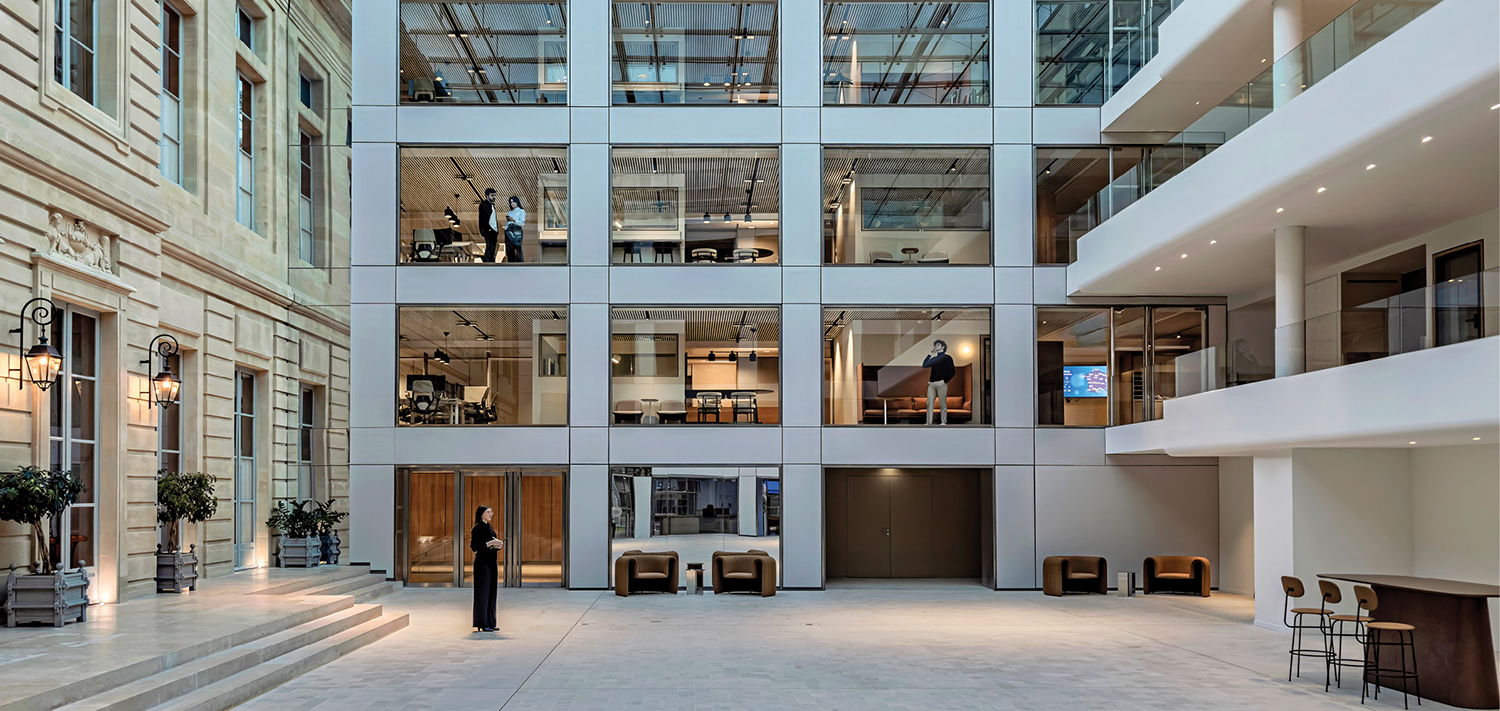Onward and Upward: Gerner Kronick + Valcarcel Moves a Financial Office to 7 World Trade Center
When the time came for a certain financial-services company to renegotiate its lease at New York’s Rockefeller Center, it was impossible to escape one fact. The rigidly subdivided office simply didn’t reflect the progressive values of a company that finances green-energy projects, such as windmills and clean coal. “It was very dated,” Randy Gerner says. So his firm, Gerner Kronick + Valcarcel, Architects, proposed a move to the top three stories of the freshly minted 7 World Trade Center. Geographically just a few miles from Rock Center, 7 World Trade is light-years away architecturally speaking. Each of the Skidmore, Owings & Merrill building’s floor plates is a 40,000-square-foot trapezoid virtually wide open, with few structural columns. That gave GKV the flexibility to design a variety of work environments connected by circulation spaces that offer opportunities for impromptu encounters. As Gerner explains, “The executive team felt that, by enhancing communication in the office, you get business innovation.”
Private offices are generally relegated to the center, while workstations and conference rooms are positioned closer to the glass curtain walls to take advantage of the daylighting so crucial to the quest for sustainability. From the outset, the company’s LEED-accredited associate director of New York facility and property management, Matthew Rich, pushed for certification. “It’s the future of building, like upgrading with fiber-optic data cables was in the late ’80’s,” he says. “If you don’t do it, you’re functionally obsolete.” That commitment was rewarded shortly after the move-in date, when GKV’s build-out was certified LEED Platinum.
Thinking green did not extend to money matters, however. Global finance was in crisis at the time of the lease signing, in 2008, and it was important to the company not to be extravagant. Given the rich result, you’d never know there were any such restrictions. It starts with a billion-dollar view sweeping a full 360 degrees. If that’s not impressive enough, you can also experience it through the lens of the reception area’s combination telescope-kaleidoscope, pointed straight at Cass Gilbert’s Woolworth Building and the East River beyond.
Reception’s color scheme loosely takes its cues from headquarters in Europe. Paneling and flooring are oak. Leather upholstering the angular seating is gray, as is the enclosure of the meeting rooms opposite. (The gray-stained oak veneer that Gerner chose for the enclosure is a riff on the “chillier” gray automotive paint used on a similar wall at headquarters, he says.) Serving as improbable sculptures are two huge gear wheels displayed on reception’s credenza. One painted gray, the other red, they come from an old paper mill-a nod both to the company’s financing of industrial projects and to the concept of recycling. Recycled furnishings include reception’s rug, pieced together from scraps of vintage Turkish and Persian rugs. Here and in work spaces, the floor is salvaged oak. And it didn’t hurt that the Aeron task chairs, Aluminum Group conference chairs, and Barcelona lounge chairs came from the previous office. This reuse strategy helped GKV keep a steady eye on the bottom line. In fact, the project came in an impressive 40 percent under budget.
GKV saved enough by cleverly configuring a standard ceiling system in a modular grid, which accommodates off-the-shelf lighting and sprinkler components, that money could be invested in a sophisticated daylight-harvesting system designed to dim in bright sunshine, conserving loads of energy. In addition, partially mirroring columns near the windows bounces the sun’s rays inward, and the sidewall of every private office ends in a clear glass panel. That’s a trick Gerner previously used near windows to improve views, but it likewise channels natural light deeper in. Topping the low workstations, strips of frosted glass offer a bit more privacy without blocking the light.
All three levels share the same basic layout, with a structural core that provided GKV with its biggest spatial challenge. “Because 7 World Trade was built to be as resistant as it can be to terrorist attacks, there’s a double core divided by a 9-foot-wide corridor that’s usually considered underutilized space,” Gerner explains. To give it a mission beyond connecting to fire stairs, restrooms, mechanicals, and so forth, he actually extended the core to house a pantry at one end and a librarylike suite at the other. “Now the center corridor is Main Street,” he says. “It’s how people get from one side of the floor to the other, picking up a cup of coffee and having a conversation along the way.” Take a few steps past the faux library, defined by hushed tones and bookcase-patterned wallpaper, and you’re in a break-out area facing ground zero. This forward-looking company is perfectly positioned to watch the redevelopment of the World Trade Center site and the completion of the National September 11 Memorial & Museum over the next year.


